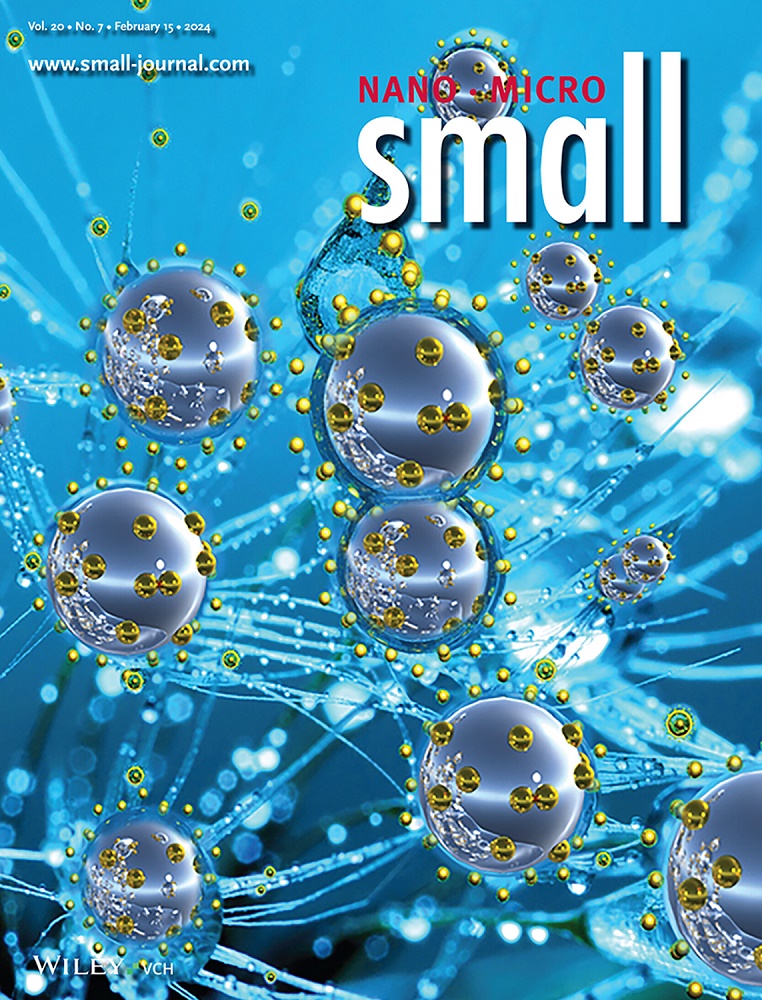Two-Dimensional Biomaterials Applied as Functional Bio-Platforms and Devices: Revolutionizing Biomedical Applications.
IF 12.1
2区 材料科学
Q1 CHEMISTRY, MULTIDISCIPLINARY
引用次数: 0
Abstract
Two-dimensional biomaterials (2DBMs), both synthetic and biological, have garnered significant attention due to their unique properties and versatile applications, particularly in biomedical engineering. This review provides an overview of both synthetic and biological 2DBMs, focusing on their fabrication methods, properties, and integration strategies for advanced device applications. The review first analyzes synthetic two-dimensional nanomaterials (2DNMs) such as graphene, transition metal dichalcogenides, black phosphorus, 2D metal oxides, and MXenes, exploring their properties and functionalization regulation (including covalent and non-covalent bonding, polymer bridging, and the incorporation of biorecognition elements). Next, the review discusses biological 2DBMs, highlighting their unique structures and synthesis processes. Strategies for tailoring these materials, such as surface functionalization, heterojunction formation, and integration with other nanostructures, are also covered. Moreover, the review outlines the fabrication approaches for 2DBM-based devices, covering chemical vapor deposition, templated synthesis, self-assembly, 3D printing, electrospinning, and liquid-phase spalling. Furthermore, the biomedical applications of 2DBM-based bio-platforms and devices are presented, where their roles in drug delivery, tissue engineering, bioimaging, diagnostics, biosensing, and neural interfaces are discussed in detail. Finally, the review concludes with insights into the current challenges and future directions for the development of 2DBM-based platforms and devices, emphasizing their potential to revolutionize healthcare and diagnostics.应用于功能生物平台和设备的二维生物材料:革命性的生物医学应用。
二维生物材料(2DBMs),无论是合成的还是生物的,由于其独特的性能和广泛的应用,特别是在生物医学工程中,已经引起了极大的关注。本文综述了合成2DBMs和生物2DBMs,重点介绍了它们的制造方法、性质和先进设备应用的集成策略。本文首先分析了合成的二维纳米材料(2dnm),如石墨烯、过渡金属二硫族化合物、黑磷、二维金属氧化物和MXenes,探讨了它们的性质和功能化调控(包括共价键和非共价键、聚合物桥接和生物识别元件的掺入)。接下来,综述了生物2DBMs,重点介绍了它们独特的结构和合成过程。此外,还介绍了定制这些材料的策略,如表面功能化、异质结的形成以及与其他纳米结构的集成。此外,综述概述了基于2dbm的器件的制造方法,包括化学气相沉积、模板合成、自组装、3D打印、静电纺丝和液相剥落。此外,还介绍了基于2dbm的生物平台和设备的生物医学应用,详细讨论了它们在药物输送、组织工程、生物成像、诊断、生物传感和神经接口方面的作用。最后,本文总结了基于2dbms的平台和设备的当前挑战和未来发展方向,强调了它们革新医疗保健和诊断的潜力。
本文章由计算机程序翻译,如有差异,请以英文原文为准。
求助全文
约1分钟内获得全文
求助全文
来源期刊

Small
工程技术-材料科学:综合
CiteScore
17.70
自引率
3.80%
发文量
1830
审稿时长
2.1 months
期刊介绍:
Small serves as an exceptional platform for both experimental and theoretical studies in fundamental and applied interdisciplinary research at the nano- and microscale. The journal offers a compelling mix of peer-reviewed Research Articles, Reviews, Perspectives, and Comments.
With a remarkable 2022 Journal Impact Factor of 13.3 (Journal Citation Reports from Clarivate Analytics, 2023), Small remains among the top multidisciplinary journals, covering a wide range of topics at the interface of materials science, chemistry, physics, engineering, medicine, and biology.
Small's readership includes biochemists, biologists, biomedical scientists, chemists, engineers, information technologists, materials scientists, physicists, and theoreticians alike.
 求助内容:
求助内容: 应助结果提醒方式:
应助结果提醒方式:


